Overview Hanoi, Capital, Vietnam
Square: 3344,6 km2 ; Population: 8.587.400 ( 2023 ) Districts: Hoan Kiem, Ba Dinh, Dong Da, Hai Ba Trung, Tay Ho, Thanh Xuan, Cau Giay, Long Bien, Hoang Mai, Dong Anh, Soc Son, Thanh Tri, Tu Liem, Gia Lam, Ha Dong, Son Tay, Ba Vi, Phuc Tho, Dan Phuong, Thach That, Hoai Duc, Quoc Oai, Chuong My, Thanh Oai, Thuong Tin, My Duc, Ung Hoa, Phu Xuyen, Me Linh.
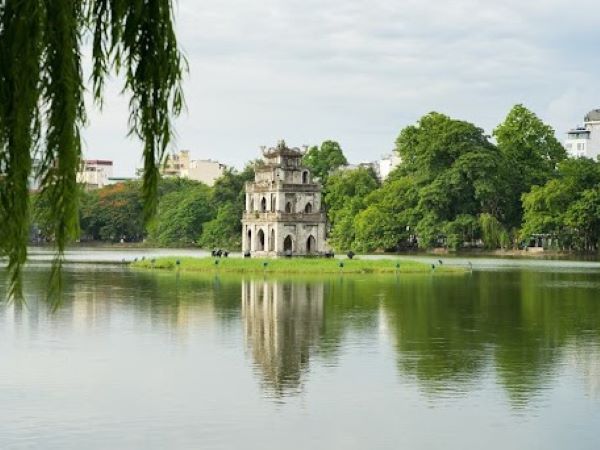
Hanoi, known as the “city between the rivers," is the capital and second-largest city of Viet Nam. The historical Old Town, the colonial French Quarter, ancient temples of more than a thousand years, and various scenic lakes and landmarks make up one of the most captivating cities in Southeast Asia, with a mix of Chinese and French influences that have enriched the vibrant Vietnamese culture.
The compact city center is surrounded by the Red River (Song Hong) to the east as well as to the north, with a railway line to the west, and Hoan Kiem Lake nowadays being its focal point of public life and an excellent point of orientation. North of the lake is Hanoi’s historic heart, the Old Quarter (Phố Cổ Hà Nội). Most street names still originate from the 13th century when each guild had its own street, usually called “Hàng” meaning “merchandise” followed by the product's name of the product, which is produced or sold there. Since, at that time, the tax depended on the width of the house frontage, the area is famous for its so-called tube houses, buildings with narrow frontages of two to three meters with a length of 20 to 60 meters.
The city’s most prominent sights include the Temple of Literature (Văn Miếu), the site of the oldest university in Vietnam dating back to 1070, the One-Pillar Pagoda (Chùa Một Cột), one of Viet Nam’s most iconic temples, the Flag Tower of Hanoi (Cột cờ Hà Nội), one of the few remains of the old Hanoi Citadel and one of the symbols of the city and many museums. Hanoi’s narrow and crowded streets filled with various exotic scents, hawkers weaving through motorbikes, and cyclos overloaded with fruits, livestock, as well as human cargo, create this unique fusion of old and new, making it a reflection of the rapid changes the country is recently going through. There’s no better way of exploring this spirit of Hanoi than wandering around the streets, soaking up its sights, sounds, and smells.
HISTORY
Hanoi has been the capital of Vietnam for nearly a thousand years, during which the city has endured numerous invasions, occupations, restorations, and name changes. The Chinese ruled Hanoi and much of Vietnam off and on for centuries, until a Vietnamese general named Le Loi (the later King Le Thai To) finally secured the nation's independence in 1428. It wasn't until 1831 that the Nguyen Dynasty renamed the city Ha Noi, which can be translated as “Between Rivers” or “River Interior”.
In mid-1800s, Vietnam was colonized by the French and Ha Noi became capital of French Indochina in 1887. The French administration imposed significant political and cultural changes on Vietnamese society. A Western-style system of modern education was developed, and Christianity was introduced into Vietnamese society. In addition, there was also the development of plantation economies to promote the exports of tobacco, indigo, tea, and coffee. The French colonialists largely ignored increasing calls for self-government and civil rights. A nationalist political movement soon emerged, with leaders such as Phan Boi Chau, Phan Chu Trinh, Emperor Ham Nghi, and Ho Chi Minh calling for independence.
During the Second World War, the Japanese occupied Hanoi and the rest of Viet Nam (1940-1945), exploiting the country for its natural resources. With the end of the war, the French resumed control of their colony. In response, Ho Chi Minh launched a liberation movement that led to eight bloody years of war with France. The French finally withdrew in 1954, leaving Vietnam divided in half at the 17th parallel, with Ho Chi Minh's communist Democratic Republic of Vietnam based in the north, and the Republic of Vietnam in the south. It followed the bitter Vietnam War (the American War), during which Ha Noi suffered from heavy bombardments. Hanoi became the capital of Vietnam when North and South Vietnam were formally reunited in July 1976.
GEOGRAPHY
Hanoi is located in the Red River Delta, in the center of North Vietnam. It is encompassed by Thai Nguyen Province to the north, Vinh Phuc and Ha Tay to the west and south, Bac Giang, Bac Ninh, and Hung Yen provinces to the east and southeast. Hanoi means "the hinterland between the rivers" (Ha: river, Noi: interior). Hanoi's territory is washed by the Red River (the portion of the Red River embracing Hanoi is approximately 40km long) and its tributaries, but there are some other rivers flowing through the capital, including Duong, Cau, Ca Lo, Day, Nhue, Tich, To Lich, and Kim Nguu.
CLIMATE
Climate: Hanoi is situated in a tropical monsoon zone with two main seasons. During the dry season, which lasts from October to April, it is cold and there is very little rainfall, except from January to March, when the weather is still cold but there is some light rain. The wet season, from May to September, is hot with heavy rains and storms. The average annual temperature is 23.2ºC (73.7ºF) and the average annual rainfall is 1,800mm. The average temperature in winter is 17.2ºC (62.9ºF), but can go down to 8?C (46.4ºF). The average temperature in summer is 29.2ºC (84.6ºF, but can reach up to 39ºC (102.2ºF)
TOURISM
Throughout the thousand years of its eventful history, marked by destruction, wars, and natural calamities, Hanoi still preserves many ancient architectural works, including the Old Quarter and over 600 pagodas and temples. Famous sites include the One Pillar Pagoda (built in 1049), the Temple of Literature (built in 1070), Hanoi Citadel, Hanoi Opera House, President Ho Chi Minh's Mausoleum...
Hanoi also characteristically contains 18 beautiful lakes such as Hoan Kiem Lake, West Lake, and Truc Bach Lake, which are the lungs of the city, with their surrounding gardens and trees providing a vital source of energy.
Many traditional handicrafts are also practiced in Hanoi, including bronze molding, silver carving, lacquer, and embroidery. Hanoi has many famous traditional professional handicraft villages such as Bat Trang pottery village, Ngu Xa bronze casting village, Yen Thai glossy silk…
TRANSPORTATION
By road: Hanoi is 93km from Ninh Binh, 102km from Haiphong, 153km from Thanh Hoa, 151km from Halong, 474km from Dien Bien Phu, 658km from Hue, 763km from Da Nang, and 1,710km from Ho Chi Minh City.
By air: Noi Bai International Airport, over 35km from the city center, is one of the biggest airports in the country with various international and domestic routes. There are domestic flights from Hanoi to Da Nang, Dien Bien, Ho Chi Minh City, Hue, Nha Trang, and international flights to many countries around the world.
By train: Hanoi Railway Station is Vietnam's main railway station. It is the starting point of five railway lines leading to almost every province in Vietnam.
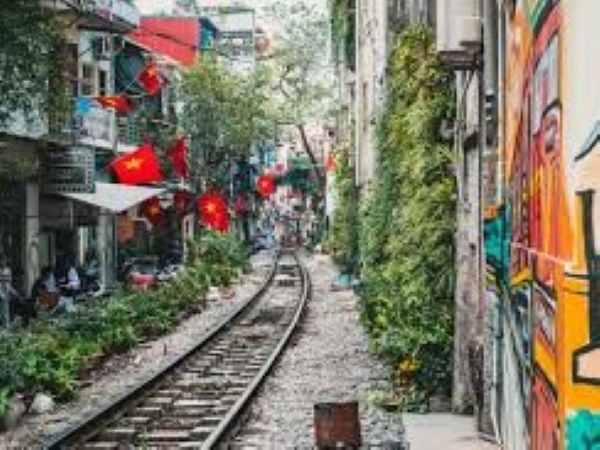
Ho Chi Minh’s Mausoleum in Hanoi
Construction on the Ho Chi Minh Mausoleum began on September 2, 1973 and the structure was formally inaugurated on August 29, 1975.
The Ho Chi Minh Mausoleum (Vietnamese: Lăng Chủ tịch Hồ Chí Minh) is located in the center of Ba Ðình Square where Ho Chi Minh read the Declaration of Independence on September 2, 1945 - establishing the Democratic Republic of Vietnam. While the mausoleum’s design was inspired by Lenin's Mausoleum in Moscow, it incorporates distinct Vietnamese architectural elements such as a sloping roof.
The exterior of Ho Chi Minh’s Mausoleum is made of gray granite, while gray, black, and red polished stone is used in the interior. The mausoleum's portico has the words "Chủ tịch Hồ Chí Minh" inscribed across it, which translates as "President Ho Chi Minh." "
In his will, Ho Chi Minh had expressed a wish to be cremated and to have his ashes scattered across the hills of north, central, and southern Vietnam. Nevertheless, the mausoleum was built in spite of his wishes. The structure itself is 21.6 meters high and 41.2 meters wide and is flanked by two platforms with seven steps for parade viewing. The plaza in front of the mausoleum is divided into 240 green squares separated by pathways, while the gardens surrounding it have nearly 250 different species of plants and flowers from all regions of Vietnam.
Inside the Ho Chi Minh Mausoleum, Ho Chi Minh's body is preserved in a glass case that lies in the cooled central hall where a military honor guard is present.
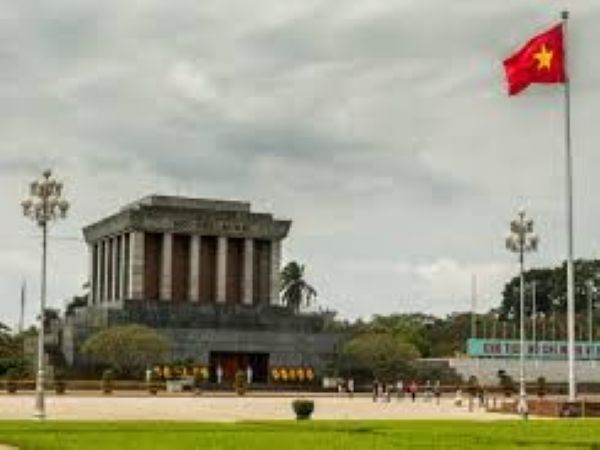
Van Mieu – Quoc Tu Giam
Văn Miếu-Quốc Tử Giám, a monumental testament to our country's Confucian educational system during the monarchical era, stands as the largest educational center of its kind. It has been the nurturing ground for countless scholars and talented individuals, shaping the nation's intellectual landscape. Today, the relics of this prestigious institution still bear witness to its historical significance, with items like the stone inkstone and brush, each carrying a symbolic weight associated with the first national school.
Previously, four stone inkstones were placed at the old foundation of Quốc Tử Giám, later transferred to be preserved in the Đại Thành sanctuary area, with one of them displayed in the exhibition space "Quốc Tử Giám – the first national school." There are no documents yet that specify when the four inkstones were made. However, all four inkstones bear the inscription "Thái Học đường nghiên" (Inkstone of the Thái Học House), an essential piece of information that partly indicates their era. Thái Học was the name of the Quốc Tử Giám school under the Lê dynasty (15th-18th centuries). It is said that in the past, during literature discussions at the Thái Học House, students would come and compete to grind ink on these stone inkstones to take notes.
The inkstone and brush, two essential study tools of the past, hold a special place in the history of our educational system. In front of the Bái Đường House, two stone columns stand, each shaped like a brush. These columns, erected in the spring of the year Canh Thìn (1760), are not just architectural elements but also symbols of the intellectual pursuit that took place within these walls. The inscriptions on the stone arch west of the Bái Đường House read '"Phụng mệnh kính lập'" (Erected by command) and on the east: '"Canh Thìn quý xuân'" (Spring of March, the year Canh Thìn), further adding to their historical significance.
These are valuable artifacts symbolizing our nation's long-standing scholarly tradition. They serve as evidence of the existence of Quốc Tử Giám, the country's first national school.
UNESCO has accepted the 82 stone steles at Van Mieu – Quoc Tu Giam (Temple of Literature), the first university of Vietnam, as a world documentation heritage.
When the Ly Dynasty kings opened the Temple of Literature (Van Mieu) to train talents, recruiting talented individuals became part of the country’s construction and development in the 11th century.
Under the order of King Le Thanh Tong (Life: 1442 – 1497, Reign: 1460 – 1497), doctoral laureate Than Nhan Trung highlighted this idea when he composed an announcement for the erection of the steles at Van Mieu – Quoc Tu Giam: “Excellent talents with good virtue are the sap of the country. If the sap is strong, the country will be strong and progress. If the sap is weak, the country will weaken and degrade…” (The first stele was set up in 1484 with the record of the examination held in 1442).
After King Le Thanh Tong’s reign, all later dynasties set up their own steles at Van Mieu – Quoc Tu Giam to record the purposes and regulations of each examination and to honor the laureates of the royal examinations. 82 stone steles were set up in Van Mieu – Quoc Tu Giam in the heart of Thang Long during the 300 years of dynastic Viet Nam.
Despite disturbances, most dynasties paid attention to training and recruiting talents. The last stele at Van Mieu – Quoc Tu Giam was set up in 1780 with the record of the examination held in 1779. The Nguyen kings (1802 – 1945) continued to place steles at their new Temple of Literature in the city of Hue when they moved the capital there.
The decorative designs of all the steles were made by Vietnamese craftsmen and famous writers from their time. Each stele contains details of the history of each examination as well as the history of Viet Nam’s education, the change in thinking, and the culture of each dynasty.
Today, just looking at the design of each stele stone, aestheticians can understand the change in art styles during the 300 years because each ornamental pattern bears the imprints of a historical epoch. Over a long time, stone steles have been considered historical documents for education, art, literature, and philosophy.
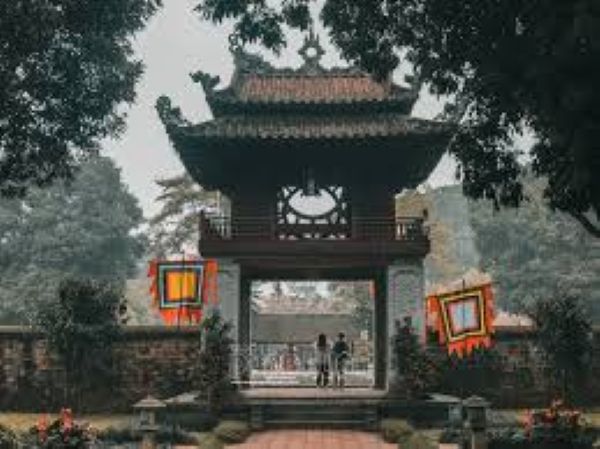
Hoa Lo Prison Relic
From the end of 19th century, the French colonialists strongly suppressed the fighting movements of the Vietnamese people. They established court systems, recruited more policemen, and built many more prisons to serve their ruling administration in Viet Nam. In 1896, the French constructed Hoa Lo prison on the land, which was a famous pottery village - Phu Khanh Village, Vinh Xuong, Tho Xuong District in Ha Noi. Hoa Lo was one of the largest prisons built by the French in Indochina.
Originally a renowned pottery village, the prison was designed to detain thousands of Vietnamese patriotic and revolutionary fighters. These prisoners were tortured physically and mental torture. The living conditions were deplorable; poor-quality food, unsanitary conditions, numerous diseases, and inadequate personal hygiene. Nevertheless, the detained revolutionists still believed in the Communist Party by transforming the prison into a revolutionary school where they promoted revolutionary ideals. Many individuals successfully escaped from here, returning to lead the general uprising.
Numerous patriots, revolution leaders of Vietnam were imprisoned in Hoa Lo prison, including Phan Boi Chau, Luong Van Can, Nguyen Quyen, Ho Tung Mau, Nguyen Luong Bang… and five General Secretaries of the Vietnam Communist Party: Nguyen Văn Cu, Truong Chinh, Le Duan, Nguyen Van Linh và Do Muoi.
In October 1954, after the liberation of northern Vietnam, the Vietnam Government utilized Hoa Lo Prison to temporarily detain regular prisoners.
From 05/8/1964 to March 31/3/1973, a section of the prison was utilized to hold American pilots who were shot down during their bombing missions against North Vietnam. During this period, Hoa Lo was euphemistically called the “Ha Noi Hilton” by the detained prisoners. Notable detainees. “Alumni” of Hoa Lo include Douglas Peter Peterson, who later became the first US Ambassador to Viet Nam, and John McCain, a US Senator.
In 1993, to support the economic development of Ha Noi, the Vietnamese government retained a portion of Hoa Lo to convert it into a historical relic. This section, situated in South - East of the prison, was preserved, renovated, and enhanced. Here, there stands a memorial monument dedicated to the Vietnamese patriotic and revolutionary fighters. This is also a “Red Address” for educating Vietnamese people from all strata, especially young generations, particularly the patriotic and revolutionary traditions of those who sacrificed for the sake of the nation’s independence and freedom.
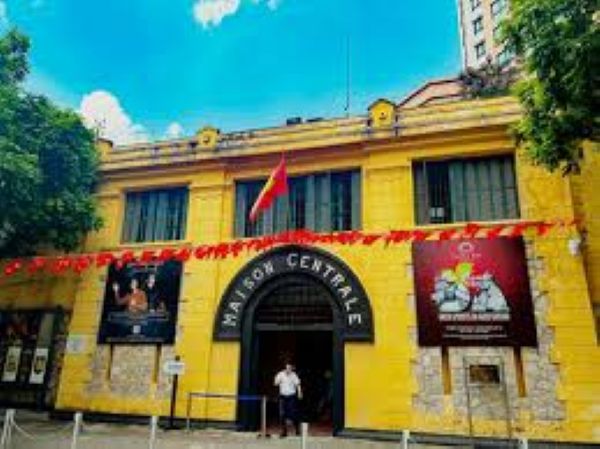
VIETNAM FUNNY TRAVEL
